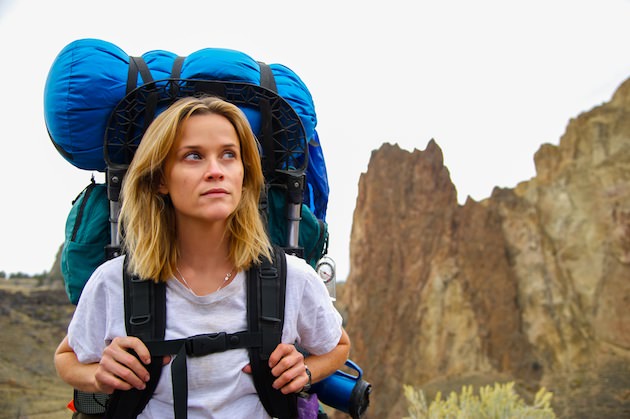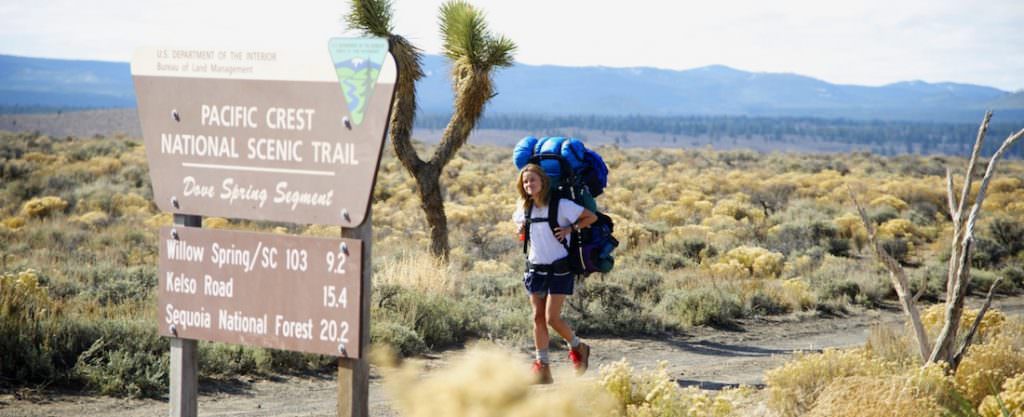The Bold Adaptation of Cheryl Strayed’s Wild for the Screen
There is a moment in Cheryl Strayed’s memoir “Wild” where she has it out with her mother while hiking in Crater Lake National Park, Oregon—only by this point, her mother is dead, and the reckoning is with Strayed's own grief and anger on what would have been her mother's fiftieth birthday. Strayed catalogued some of the worsts things her mother had done, with dying at forty-five being the worst of the worst. These included occasionally smoking pot in front of her and her siblings, telling Strayed it was perfectly okay with her if she called her by her first name instead of 'mom,' and showing little interest in the precocious Strayed's collegiate interests, never once asking her where she wanted to go to school. “That scene when I’m walking to Crater Lake and blaming her [for all her faults] felt like a sullying of my mom,” Strayed said during a talk at Portland State University. “I needed to show my mom as a human being…and show myself as a human, taking this dead woman to task…this creates a story that is dense with meaning.” What comes through in this moment, however, isn't Strayed sullying her mom, or a revelation of what a monster her mom was (clearly she wasn't–the list is only seven items long and hardly earth shattering), but how raw her grief still was five years after her mother's death.
Strayed’s memoir, about hiking the Pacific Crest Trail after her mother’s death to cancer, her battle with addiction and the end of her marriage, is now a major motion picture playing starring Reese Witherspoon as Strayed. The PCT is some 1,100 miles along the Sierra Nevada and Cascade mountain ranges as the crow flies, but the hike is actually double that when you factor in not having wings. Strayed estimated she hiked more than 2,000 miles, from the Mexican border in California to the Oregon/Washington border. The entire PCT moves along the crest of nine mountain ranges, passing through "national parks and wilderness areas as well as federal, tribal, and privately held lands; through deserts and mountains and rainforests; across rivers and highways," as she wrote. Witherspoon is one of countless people who were moved, and awed, by Strayed’s memoir (another was Nick Hornby, who blurbed it, and would go onto to adapt it for the screen), but Witherspoon is probably one of the few people who could option the book before it was even published and turn it into a film within two years. After reading the book in galley on a plane, Witherspoon called Strayed on the phone to tell her she loved it and to ask if she would allow her to turn it into a film.
Using her own money and producing with her Pacific Standard film partner Bruna Papandrea, Witherspoon, along with director Jean-Marc Vallee and novelist/screenwriter Nick Hornby, overcame a slew of obstacles in adapting Strayed's wrenching, dangerous and ultimately immensely moving journey for the screen. Figuring out how to create a film that needed to be both visually epic (in the grounded, lived-in sense felt in previous solo adventure/nightmare films like 127 Hours and Sean Penn's Into the Wild) while also staying true to Strayed’s brutally honest and equally harrowing interior journey was no small feat, let alone on a relatively modest budget and shot in a fairly brisk month in the fall of 2013. That the film is being considered an Oscar hopeful after bowing at the Telluride Film Festival must feel like a revelation for Witherspoon, who hasn't had this kind of heat since she won an Oscar for her performance in Walk the Line.
The first part of the production was, of course, Nick Hornby's adaptation. No easy task there, taking a beloved 311-page book written by a candid, immensely talented woman and adapting it into a 100-page script. Strayed told The Bulletin that Hornby began talking to her before he began writing, and kept her in the loop throughout the process. "He was so respectful of me all along the way, as was everyone involved in the film," she said. "He’s not only a brilliant writer, he’s a generous, big-hearted man. I feel incredibly lucky that he adapted my book for the screen."
When Wild was just set to begin filming at Crater Lake National Park for that crucial scene where Strayed works out her frustrations with her late, beloved mother, the cast and crew ran into a small problem—the 2013 government shutdown that closed all national parks. “At the very beginning, the national parks shut down the day we were starting to shoot,” Witherspoon said in a Q&A at the Telluride Film Festival. “We were in a panic. We had to shuffle locations.” Eventually Witherspoon and the rest of the crew did film at Crater Lake, including a desert sequence that was filmed in the Pumice Desert—only this was in late October in Oregon, and although the script called for Witherspoon to be soaked in sweat, she was actually covered in goose bumps.
The production crew limited their footprint in Crater Lake at the behest of Crater Lake rangers, including superintendent Craig Ackerman. The Herald News reported that Ackerman praised the film’s agile producers who shuffled their shooting schedule after the government shutdown and who pivoted after a request to shoot in the park’s Llao Rock area was nixed due to the site’s endangered plants, as well as their delicate treatment of the fragile Pumice Desert.


Oregonians had a bit of fun when the above photo was released by Fox Searchlight, which shows Reese Witherspoon standing in front of a beautiful, colossal rock. To 99% of the country, this looks like it belongs in the film, but to Oregonians, this is clearly Smith Rock, which is not located on the PCT. "To shoot on locations that are not literally the locations being depicted is a common practice in film," Strayed told the Bend, Oregon Herald. "It’s necessary for a number of logistical reasons. The intention was always to capture the stunning and diverse natural beauty of the PCT, even if we weren’t always on it. Though Smith Rock is iconic to Oregonians, most who see the film won’t know the difference."
What will matter to the people who see Wild, especially those who loved Strayed's book, will be the film's commitment to the hard won honesty and truth that courses through its pages. Witherspoon was inspired to make the film in the first place to do just that.
"I grew up as little girl loving movies," Witherspoon said at the Telluride Q&A. "But I never in my 20 years of making movies have I ever read a script where at the end, the woman is alone, no man, no money, no job, no opportunities, no house, no car, and it's a happy ending. I think that is revolutionary."




